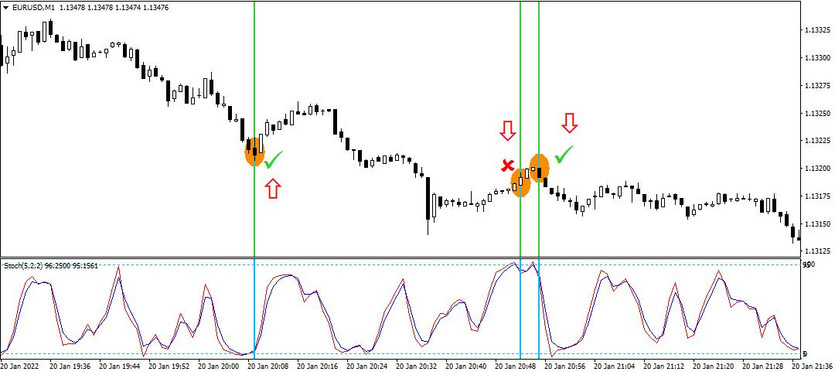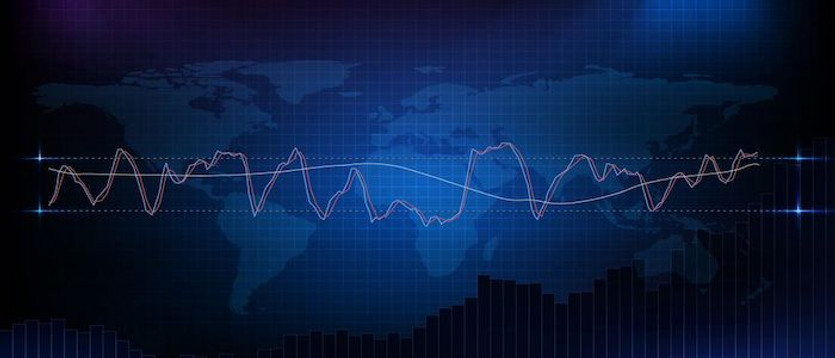Stochastic is, dare we say, one of the most used trading oscillators, which is often not missing even in the basic equipment of seasoned professionals.
Moreover, also thanks to the aforementioned popularity, stochastic is currently used not only across different markets but also across time frames and trading strategies, among which of course scalping strategies are not missing, one of which we will now show and analyze here.
Strategy entry rules
Entering long positions
1) both stochastic lines fall below the level of 5
2) both lines rise above the 5 level
Entry into short positions
1) both stochastic lines rise above the 95 level
2) both lines fall below the 95 level
How to trade with the strategy
Stochastic scalping is not a difficult trading strategy, quite the opposite. Therefore, the most important part for traders tends to be strict adherence to the rules, where first of all, you should always trade only on the M1 chart and with the stochastic settings as shown in the chart above. If this is met, then one only needs to wait until the entry conditions are met to enter into a likely profitable trading position. This means, for example, that the moment the stochastic level of 95 is hit/exceeded (both lines hit/exceed it) and then falls below this level again, then we execute a short entry. Analogously, in reverse, we then approach the level 5, where we subsequently implement long entries in reverse.
In the chart below, we can see 3 entry situations right away, and in the case of the second entry, the market did not react as predicted and climbed some more, created a second short signal, and then only picked up the decline. These situations should also be taken into account and limit orders should be set appropriately.

With today's scalping strategy using the stochastic oscillator, it is possible to achieve success rates in excess of 70%. However, it is still important to keep in mind that the final success rate can also be additionally influenced not only by the selected currency pair, but also by other socio-economic and political factors.





